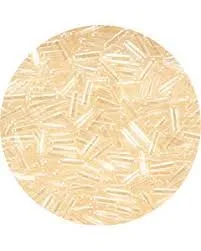
Nov . 21, 2024 03:33 Back to list
hpmc hydroxypropyl methyl cellulose
Understanding Hydroxypropyl Methylcellulose (HPMC) Properties and Applications
Hydroxypropyl Methylcellulose (HPMC) is a versatile and widely used cellulose derivative, known for its exceptional properties that make it an essential ingredient in various industries, including pharmaceuticals, food, cosmetics, and construction. This article explores the origins, characteristics, and applications of HPMC, highlighting its significance in modern manufacturing and formulation processes.
Origins and Production
HPMC is synthesized through the chemical modification of cellulose, a natural polymer derived from the cell walls of plants. The production process involves the treatment of cellulose with alkali, followed by etherification with propylene oxide and methyl chloride. This modification results in a white, odorless powder that is soluble in water, forming a viscous gel. The varying degrees of hydroxypropyl and methyl substitutions allow manufacturers to tailor HPMC’s properties for specific applications.
Physical and Chemical Properties
One of the standout features of HPMC is its solubility in water, which varies based on the degree of substitution. HPMC is non-ionic, meaning it does not carry any charge, which enhances its compatibility with other ingredients in formulations. It exhibits excellent thickening, emulsifying, and film-forming properties, making it a valuable component in many products.
The viscosity of HPMC solutions is highly dependent on concentration and temperature, which allows formulators to manipulate the texture and flow properties of their products. Additionally, HPMC is resistant to acids, bases, and heat, making it stable under a wide range of conditions. This stability is crucial for industries that require prolonged shelf-life and consistent performance.
Applications in Various Industries
hpmc hydroxypropyl methyl cellulose

1. Pharmaceuticals HPMC is a critical ingredient in the pharmaceutical industry, where it is used as a binder in tablet formulations, a thickening agent in suspensions, and a coating material for controlled-release applications. Its ability to form a gel in the gastrointestinal tract enhances drug delivery and absorption, improving therapeutic efficacy.
2. Food Industry In the food sector, HPMC serves as a thickener, stabilizer, and emulsifier. It is commonly found in sauces, dressings, ice creams, and gluten-free products, contributing to texture and mouthfeel while extending shelf life. As a plant-based ingredient, HPMC also appeals to the increasing consumer demand for clean label products.
3. Cosmetics and Personal Care HPMC is utilized in the formulation of various cosmetic products, including shampoos, conditioners, and lotions. Its thickening and emulsifying properties help create smooth, stable formulations that enhance product performance. Additionally, HPMC acts as a film-forming agent, providing a protective barrier on the skin or hair.
4. Construction In the construction industry, HPMC is incorporated into tile adhesives, cement, and dry mix mortars to improve workability, adhesion, and water retention. Its ability to retain moisture prevents premature drying, ensuring better bonding and durability of construction materials.
Benefits and Safety
The safety of HPMC is well established, with regulatory bodies such as the FDA recognizing it as safe for use in food and pharmaceuticals. Its non-toxic and biodegradable nature further enhances its appeal, especially in an era where sustainability is paramount. HPMC provides multiple benefits, including improved viscosity, enhanced texture, and increased stability, making it an indispensable ingredient across a range of applications.
Conclusion
In conclusion, Hydroxypropyl Methylcellulose (HPMC) is a multifaceted polymer that plays a crucial role in numerous industries. Its unique physical and chemical properties, coupled with its versatility, make it an essential ingredient in formulating effective and safe products. As industries continue to evolve, the demand for high-performance materials like HPMC will undoubtedly grow, paving the way for innovative applications and formulations in the years to come.
-
Versatile Hpmc Uses in Different Industries
NewsJun.19,2025
-
Redispersible Powder's Role in Enhancing Durability of Construction Products
NewsJun.19,2025
-
Hydroxyethyl Cellulose Applications Driving Green Industrial Processes
NewsJun.19,2025
-
Exploring Different Redispersible Polymer Powder
NewsJun.19,2025
-
Choosing the Right Mortar Bonding Agent
NewsJun.19,2025
-
Applications and Significance of China Hpmc in Modern Industries
NewsJun.19,2025







